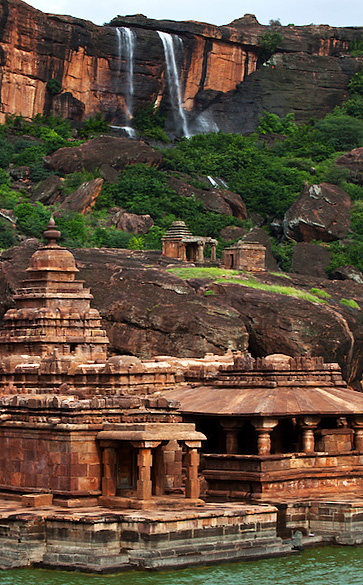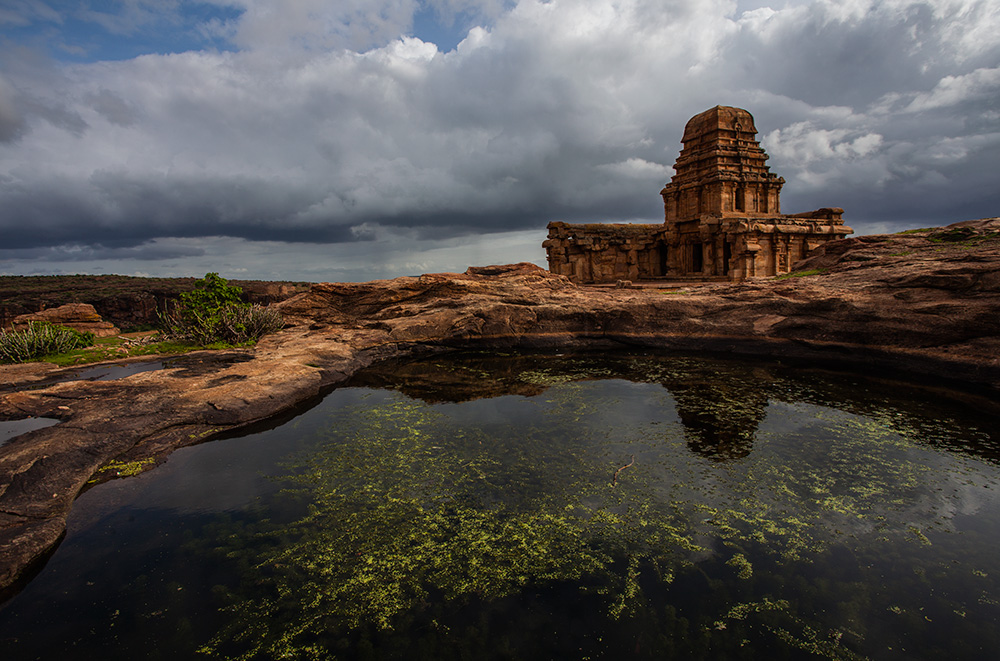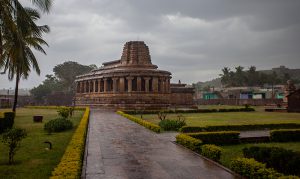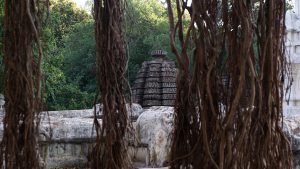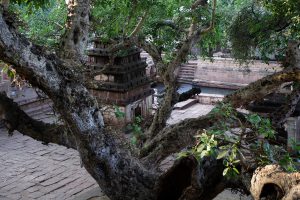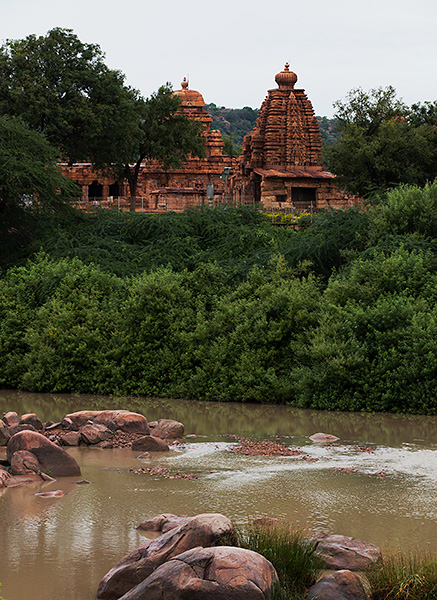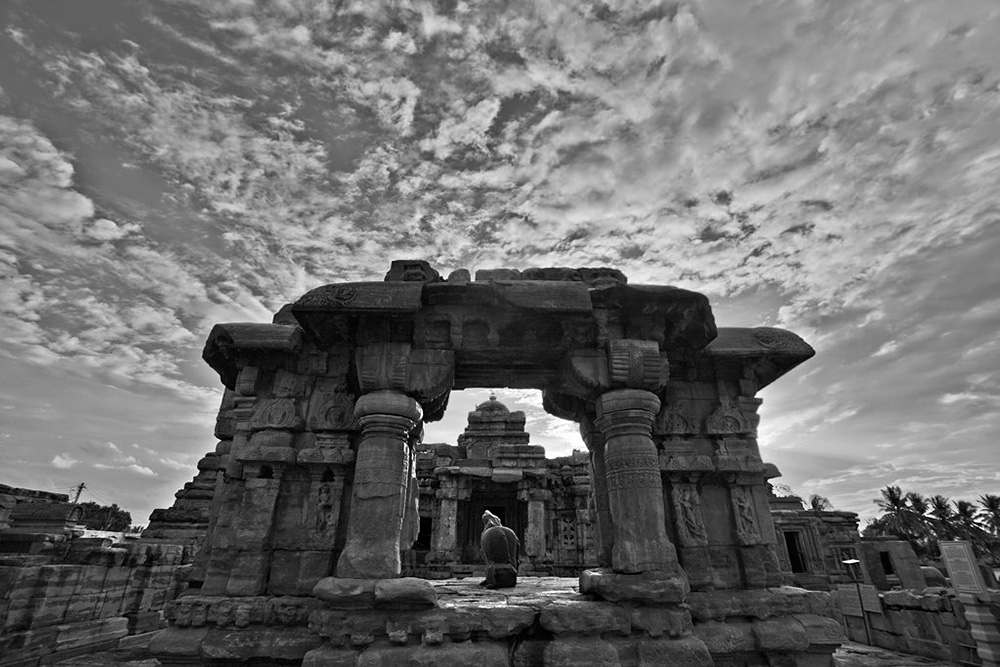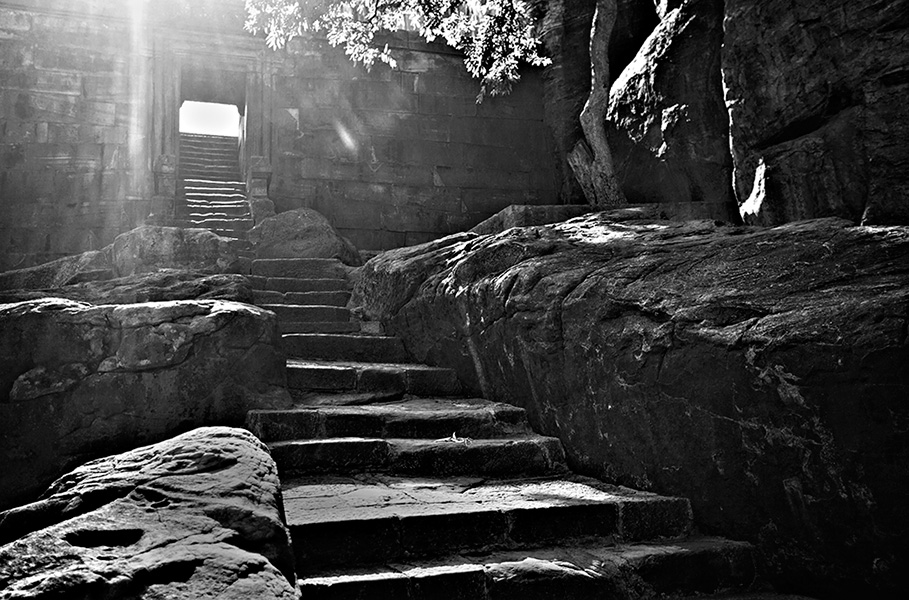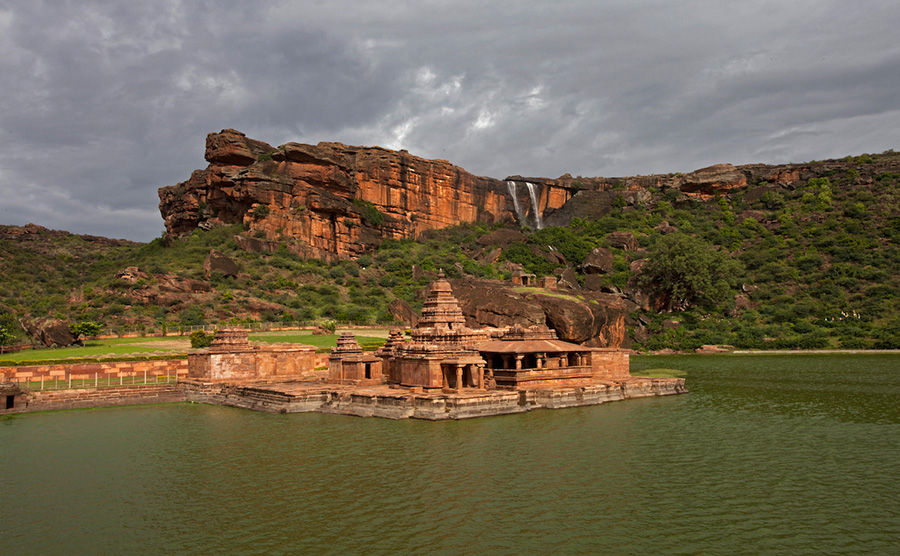Also see: our upcoming travel photography workshop & masterclass in Badami with Arun Bhat
Spread along River Malaprabha on the vast plains of Northern Karnataka are hundreds of temples built more than a thousand years ago by the venerable Chalukyan Kings. While some of these temples are in various stages of ruination, many have remained nearly intact and have been restored to their grandeur by the Archaeological Survey of India. Some of them are in brilliant locations that you wouldn’t imagine in the vast plateaued lands here, such as the Bhoothanatha Temple at the base of a cliff overlooking a beautiful lake, the Pattadakal Temples adjoining a river and corn fields, or the Meguthi temple on the top of the the only hill to be seen in miles.
Picturesque as these locations are, photographing these heritage sites always poses a challenge. As a photographer out to create unique and interesting perspective, one needs to lookout for images that go beyond the oft-photographed cliches that heritage sites are always known for. When it comes to cliches, I tend to use the example of Taj Mahal often. A perfectly symmetric photograph of Taj Mahal is indeed beautiful, but that doesn’t make your image any more valuable than the same photograph that has been shot by millions of people who have been there before you (and will be photographing after you). And in such sights that are visited by many, it is hard to find unique perspectives that aren’t already captured by others.
Returning to the context of Badami, one of the temple that posed a considerable challenge for me was the Upper Shivalaya Temple, located on the table-land over a hill. The structure itself is simple, and also blends into the rocks around it having similar colour. I looked around for an interesting perspective to help my image stand apart. Often, inclusion of a little bit of carefully chosen environment can make a sea difference to the images of architecture. In this case, a small pool that accumulated rainwater came to my rescue. Inclusion of the reflection created a bit of drama that would be otherwise hard to bring in to a simple image of the temple.
Click on the images to see a larger version
In a similar manner, I decided to include a coconut tree in the frame to avoid just the monotones that Durgigudi consisted of (below, left), and framed the spire of a gopura at Mahakoota (below, right) around aerial roots of a ficus tree. The path leading to Durgigudi provided a clear direction and the pouring rain helped add another element of interest to the image.
The temple at Mahakuta (above, right) is located in a leafy environ with several ficus trees and a tank where children came to swim. Together, they provided plenty of decorations that helped enhance the beauty of the temples.
Sometimes, finding a unique angle can be a difficult task. On a monsoon afternoon, we were at the UNESCO world heritage of Pattadakal. Malaprabha River flows right next to the temple complex, but a thick cover of trees and bushes isolates the river and temples so much that most temple visitors don’t even realize the presence of a river. The temples of Pattadakal form a complex in a fenced enclosure, with all the free space in the enclosure occupied by carefully tended lawn that feels a bit out of place against the ancient monuments. Walking all across the huge complex, I finally decided that my best bet is to go across the river. I walked more than two kilometers, sometimes wading slush in the fields to find a good place where I can frame the river along with a temple spire behind the thickets (below).
However, it doesn’t always have to be an interesting surrounding to enhance the monuments. Sometimes, classic composition techniques like a frame-within-frame can create unique perspectives that help the images stand apart.
In the image below, which was made at the well-known rock-cut temples of Badami, I simply worked on the light to create a photograph that was a bit unconventional for the place.
Sometimes luck plays an important role, and if you persist in making the image that you have contemplated on, eventually luck does yield. For long, I had hoped to see and photograph the waterfall (below) along with Bhoothanatha Temple. On two of my visits to Badami, it rained well on the days I was there, and I was able to make just the photograph I was hoping for.
More often than not, it is important to put in enough time at each location to be able to create those unique perspectives. Sometimes, one has to reach the place at the right time of the day. Sometimes you should keep enough time window to go all around the place and even search for views from a distance. By allocating sufficient time and consciously searching for unique perspectives, it is possible to come back regularly with interesting images of any architectural heritage.
Also see: our upcoming Travel Photography Workshop & masterclass in Badami with Arun Bhat

